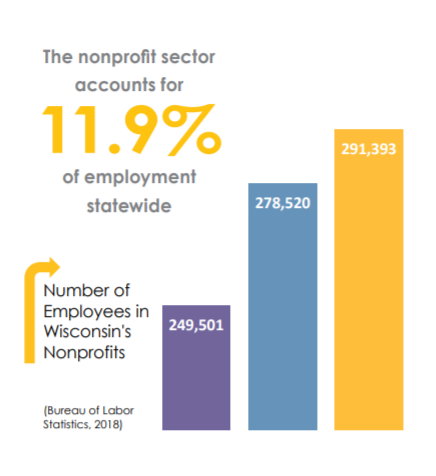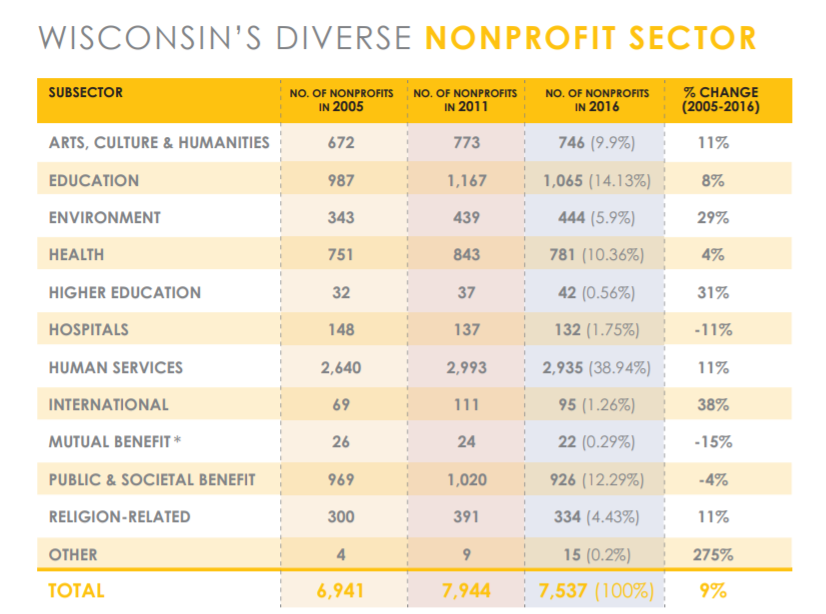
Recently we had our charitable giving kick off meeting, where we plan Acumium’s charitable actions for the next year. The meeting was remarkable. There was a sense of excitement in the space. A lot of “hands way up” volunteering and so many thoughtful ideas of how to make an impact. The air was different in this meeting. Don’t get me wrong. I work with generally enthusiastic and passionate people, and still the air felt more charged.
It got me thinking more deeply about charitable giving. What is it about giving back that makes us feel vibrant? How does charitable giving impact our community? I learned new things while exploring this topic.
"Life's persistent and most urgent question is "what are you doing for others?" - Martin Luther King Jr.
In the United States, our 1.3 million charitable nonprofits feed, heal, shelter, educate, inspire, enlighten, and nurture people of every age, gender, race, and socioeconomic status, from coast to coast, border to border, and beyond.1 They foster civic engagement and leadership, drive economic growth, and strengthen the fabric of our communities.1 Every single day. And they have a massive impact on the health of our economy.
Let’s lay it out and look more closely at the impact charitable giving has socially and on our economy.
The Social Impact of Giving
There is something fundamental about the act of giving for us humans. Giving ignites a special connection for us. Here are a few ways that charitable giving creates a social impact.
- Charity harnesses the power of community. When people care about causes and come together, change is possible.
- Charity teaches the next generation about generosity. Generosity creates a more compassionate world. Modeling generosity to children creates a legacy of kindness
- Charity helps communities become sustainable. Charities help communities become more self-sufficient so individuals and communities can support themselves.
- Charity reduces poverty and drives equality. Charitable organizations focus on the factors that contribute to poverty, like racial and gender equality. In 2015, the 1990 poverty rate was cut in half five years ahead of schedule. Charity played a big role in that achievement.
- Charity benefits donors. Helping others creates feelings of peace, pride, and purpose. These feelings translate into a more fulfilled life. The world is a better place when people have a purpose.
- Charity brings attention to the most serious issues. Charity is important because it raises awareness of urgent and important issues and gives donors the power to do something about them.
The Economic Ripple Effect of Nonprofits
It's a little harder to recognize the full impact of the indirect benefits charitable giving provides us. By participating in charitable giving, we enable non-profit organizations to have a significant and far-reaching impact on the economy. Here are some ways nonprofits enhance and bolster local, state and national economies:
- Nonprofits employ 12.3 million people. That is roughly $826 billion pumped into the economy in the form of salaries, benefits, and payroll taxes every year.
- Nonprofits also create work opportunities for millions beyond the people they employ directly. Non-profits can unburden people from daily tasks allowing them to work outside the home. They provide job training and placement services for people who would otherwise be unemployed or underemployed.
"To move forward, you have to give back." - Oprah Winfrey
- Nonprofits consume goods and services that create more jobs. Nonprofits spend nearly $1 trillion annually on goods and services, ranging from large expenses, like medical equipment for nonprofit hospitals, to everyday purchases such as office supplies, food, utilities, and rent.
- Nonprofits spur economic activity. By attending non-profit activities, you boost local businesses. Did you pay for parking? Did you buy something new for the occasion? Did you go to dinner before or meet friends afterwards? If so, you extended the economic impact.
- Nonprofits attract other employers. Many communities boast beloved cultural amenities, such as nonprofit museums, performing art venues, educated workforce and nonprofit healthcare facilities. Business leaders intuitively recognize the immense value that local nonprofits contribute to the community's quality of life.
"We make a living by what we get. We make a life by what we give." - Winston Churchill
Wisconsin Nonprofits
I found several resources that explore nonprofits by state. I found myself getting to know my state from a different angle, through the ways we engage in charitable giving. For me, this was a new way to think about the community I live in and the values we share. For more information on your state’s nonprofit business profile, check out the Council of Nonprofits.
The following data from the Helen Bader Institute for Nonprofit Management show Wisconsin nonprofits employ 11.9% of the states total workforce and generate $14.6 billion in total annual wages (Image 1). These statistics rank Wisconsin 20th in the nation for nonprofit employment.2
These nonprofits address a range of needs that government and for-profit organizations cannot or do not wish to address. (Table 1).
Wisconsin’s Nonprofit Employment Rate

Image 1: Wisconsin non-profit employment accounts for 11.9% of the total state employment and generates $14 billion in wages, ranking 20th in the nation for employment. Notably, Wisconsin ranked fourth among the 50 states in terms of percentage of state residents who volunteer (35.7%).
Wisconsin’s Diverse Nonprofit Sector

Table 1: Wisconsin benefits from a robust and diverse nonprofit sector ranging from small organizations run solely by volunteers to large institutions with thousands of employees. Nonprofit missions represent a broad range of issues important to various constituencies throughout much of the state’s population. Nearly 39% of all public charities fall within the human services subsector, followed by education which comprises 14% of the sector.
There is a rich ecosystem around nonprofits and charitable giving that make me think back on our company meeting and smile. We may not have been considering the full breadth of impact charitable giving has on a community, but we are right to feel energized by our altruistic activities. There is a whole lot of good to pump into the world simply by giving a little here and there.
References: